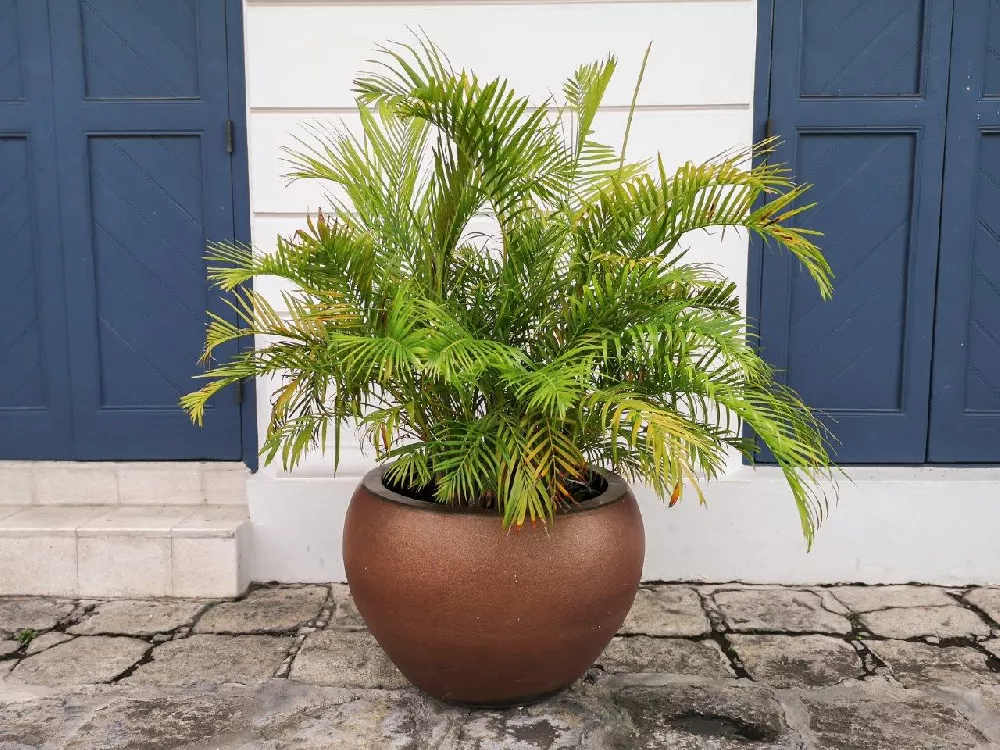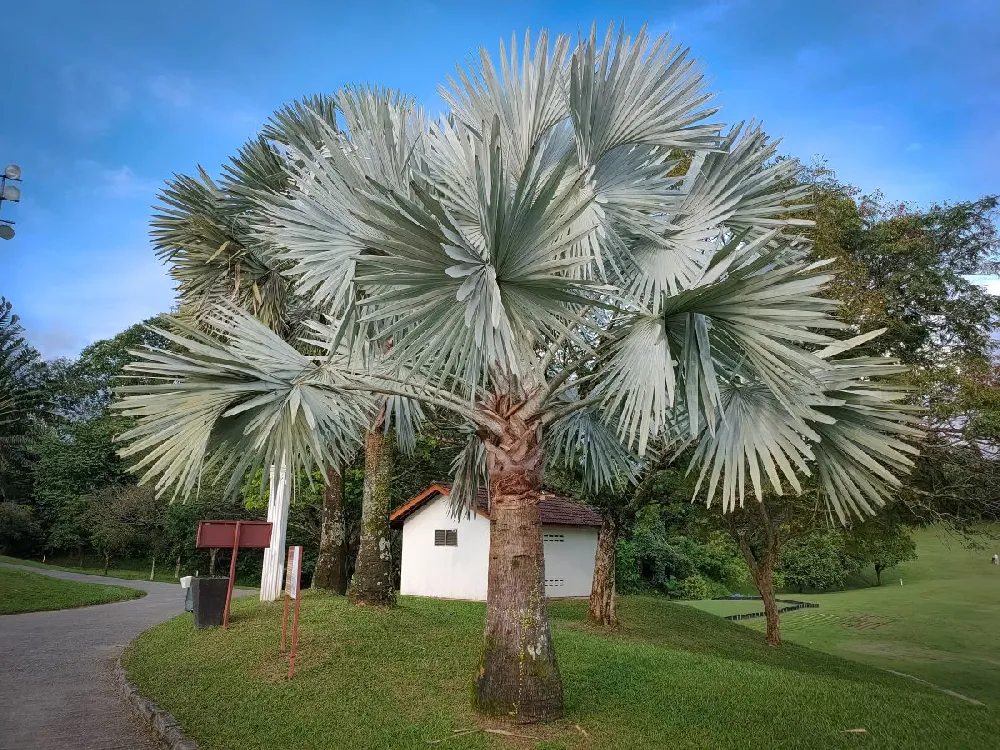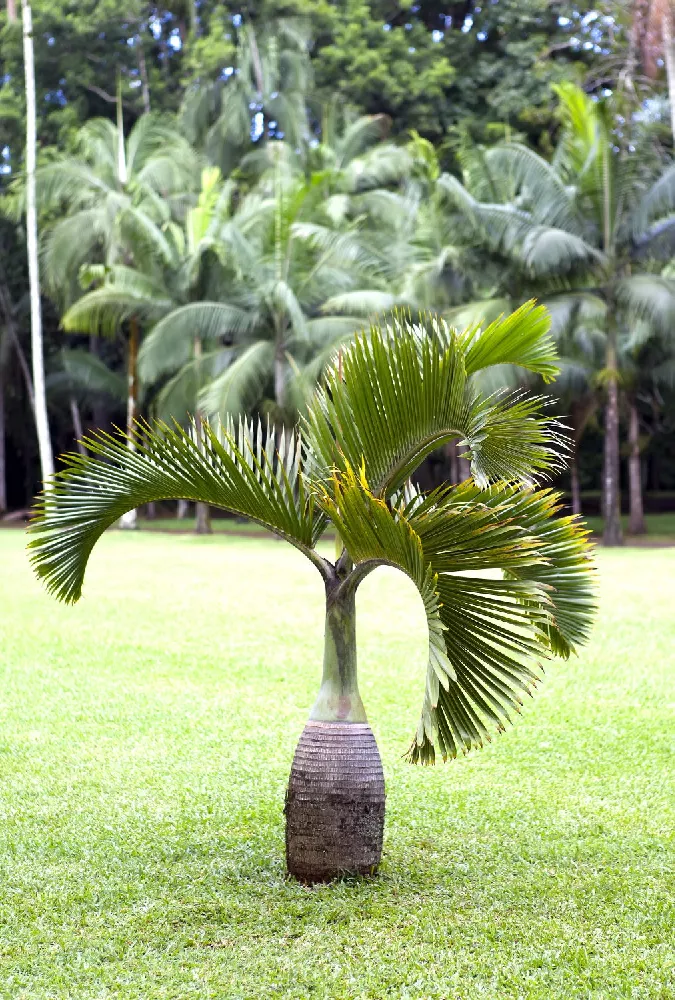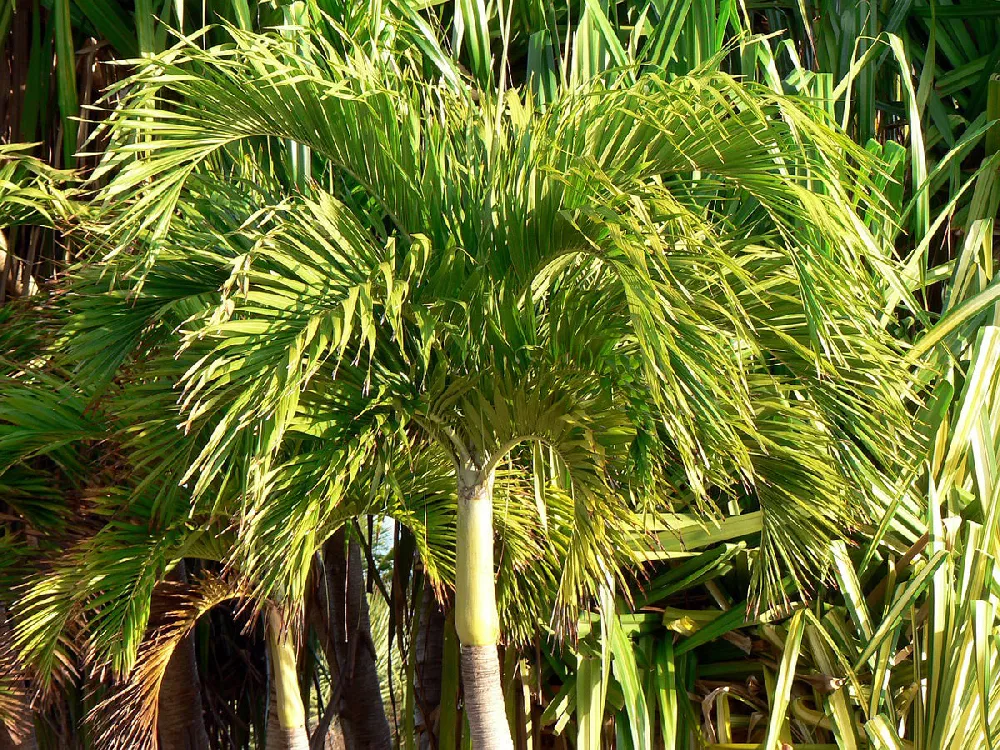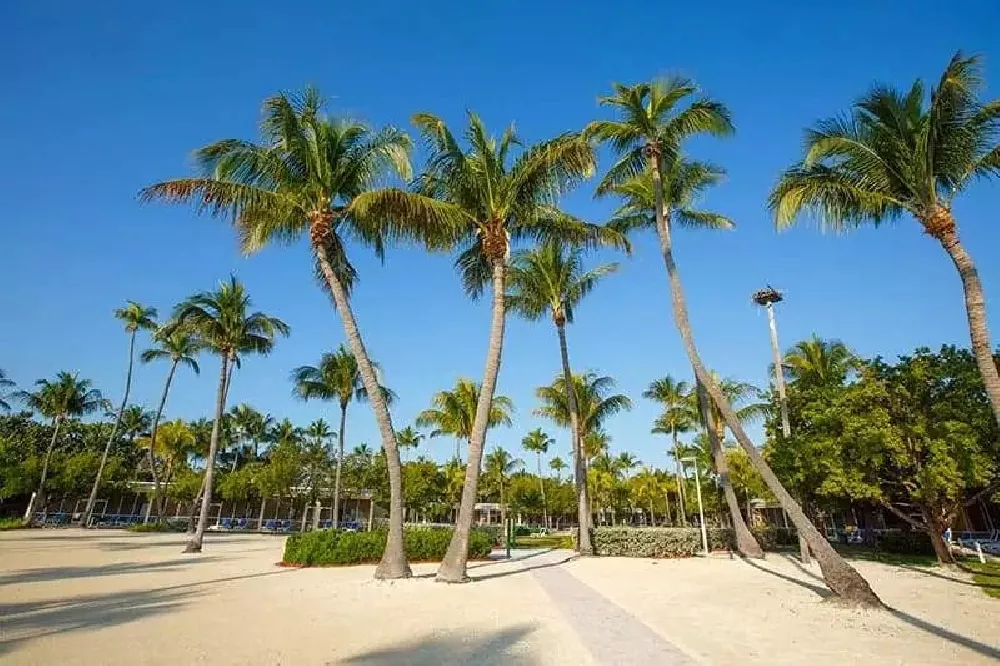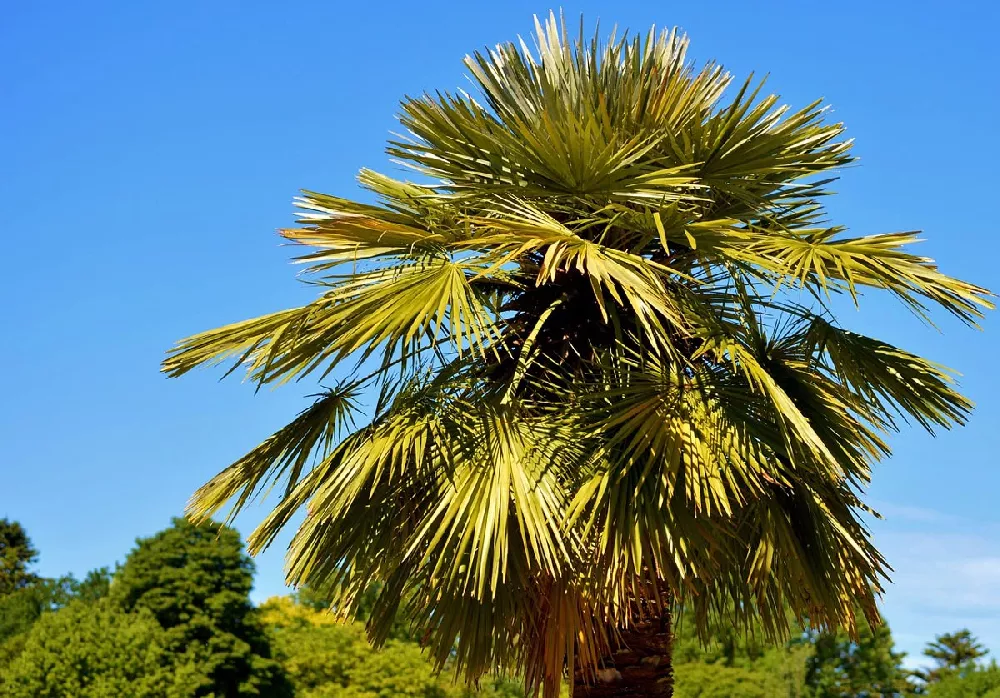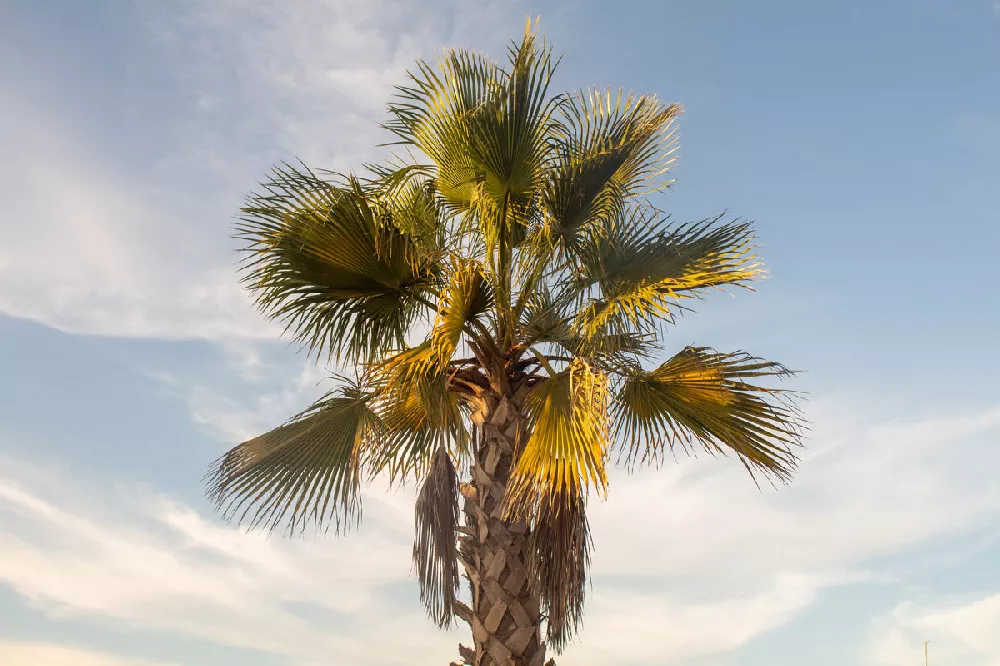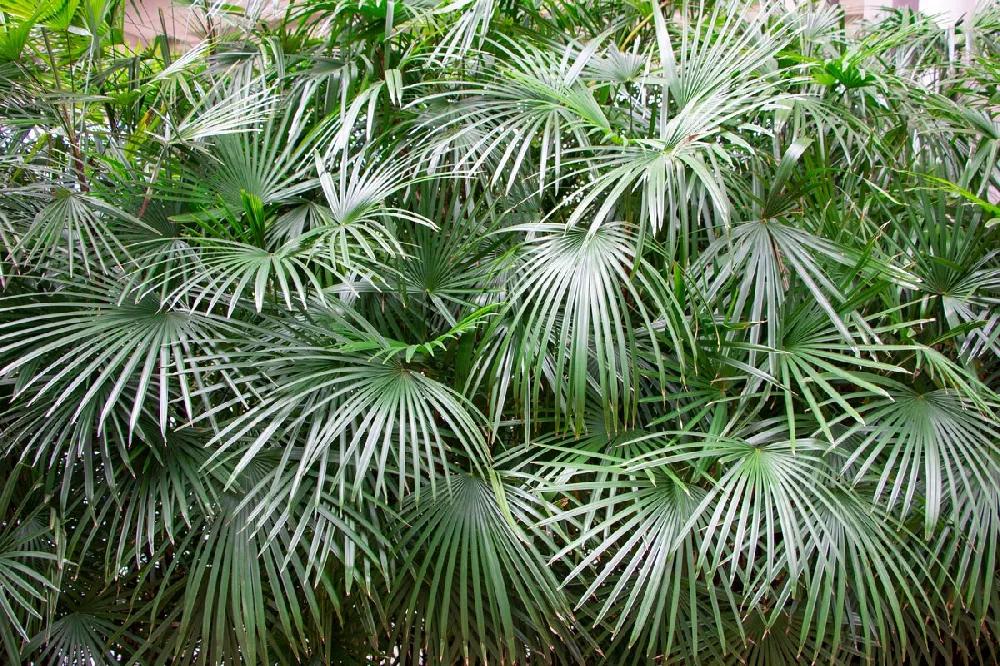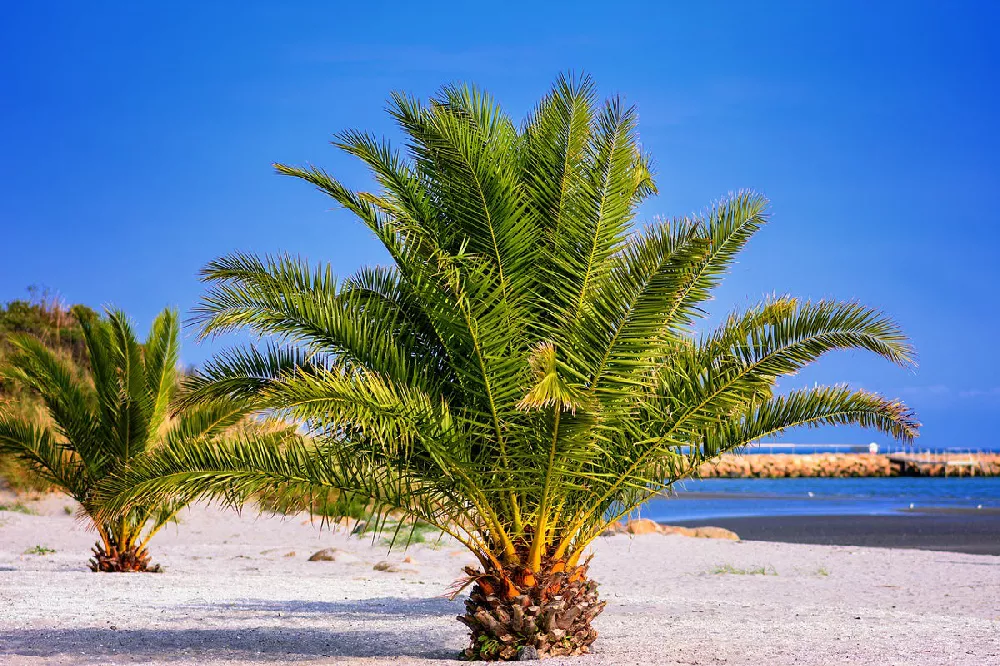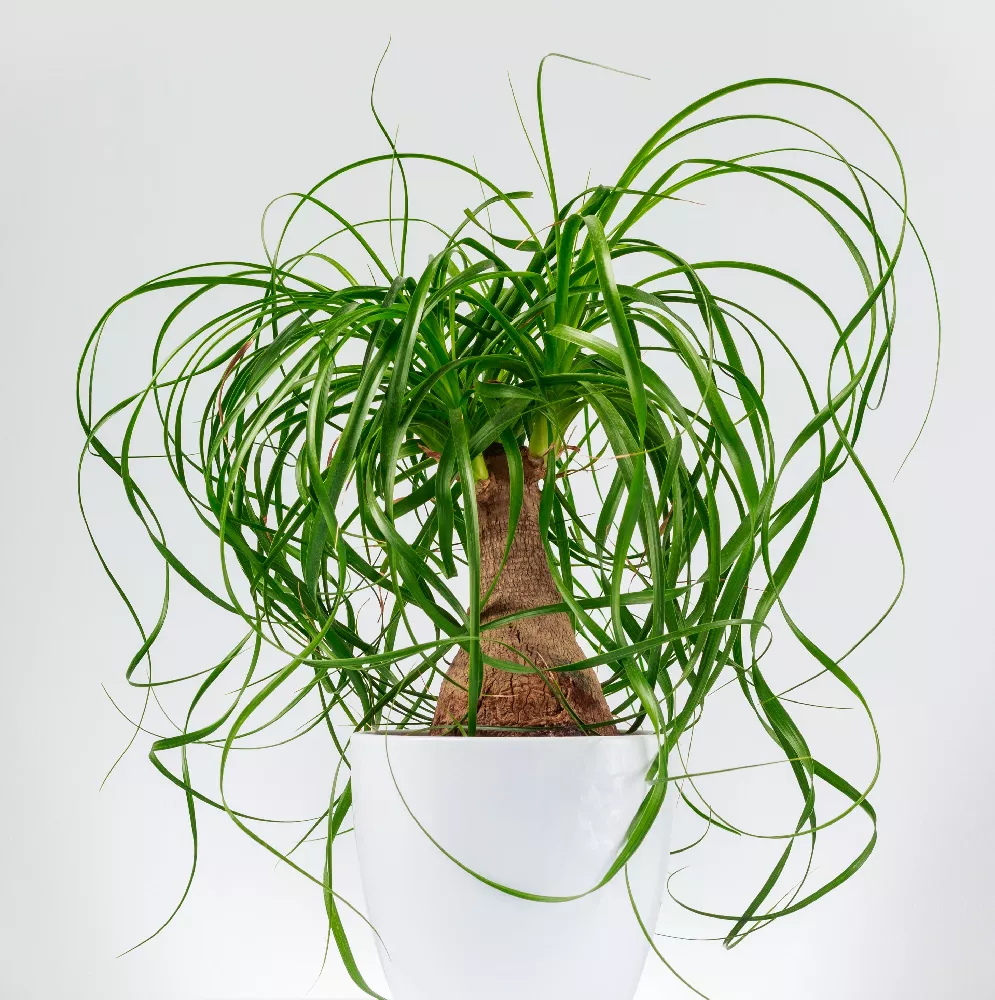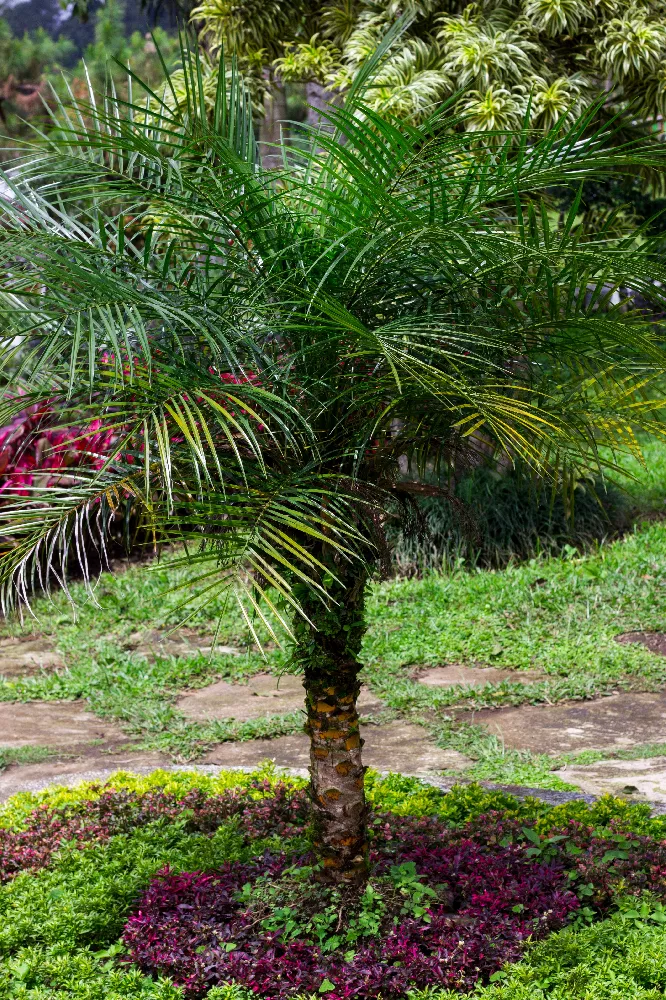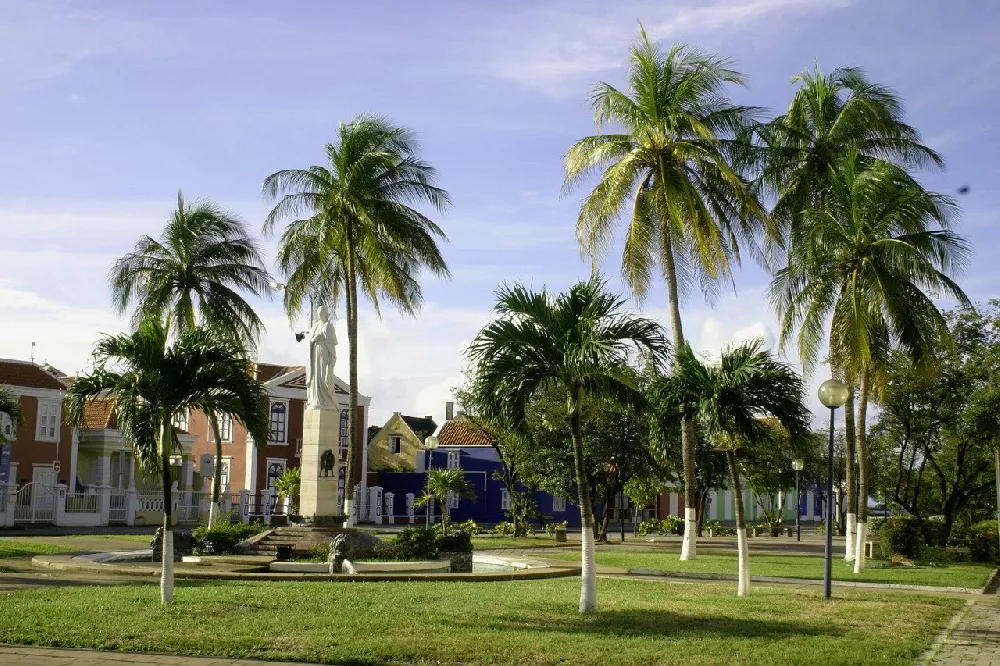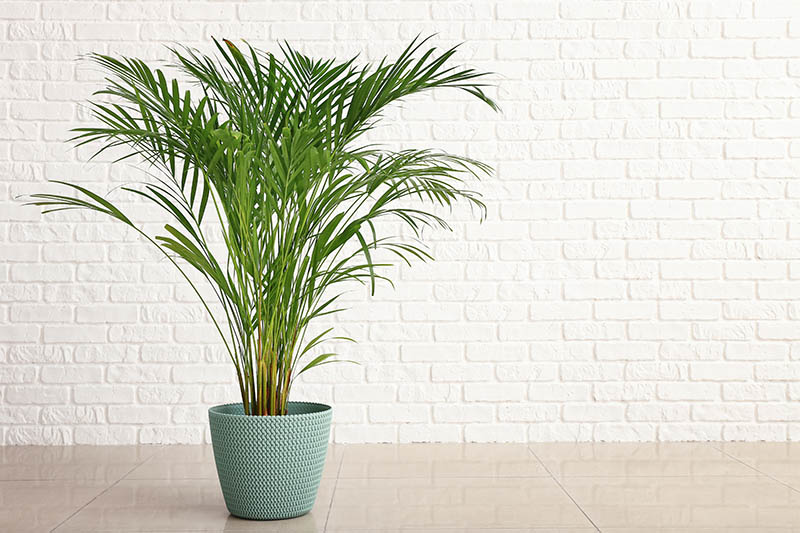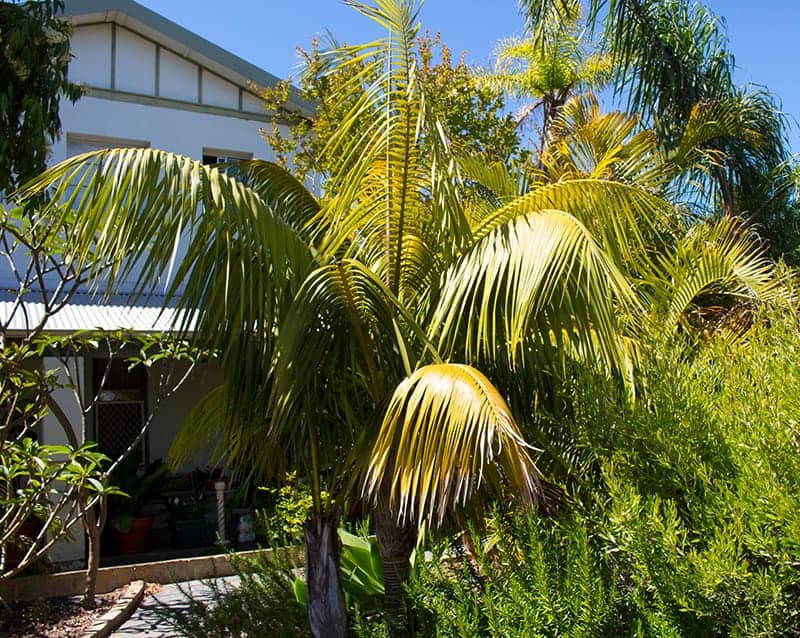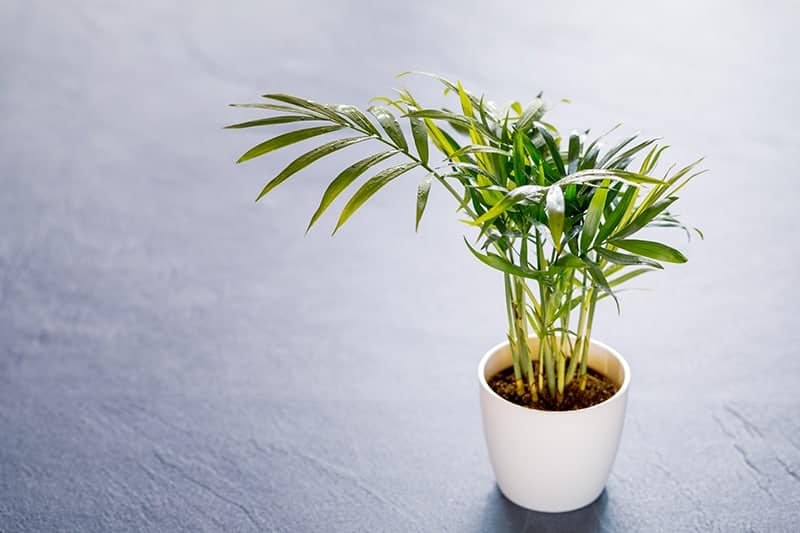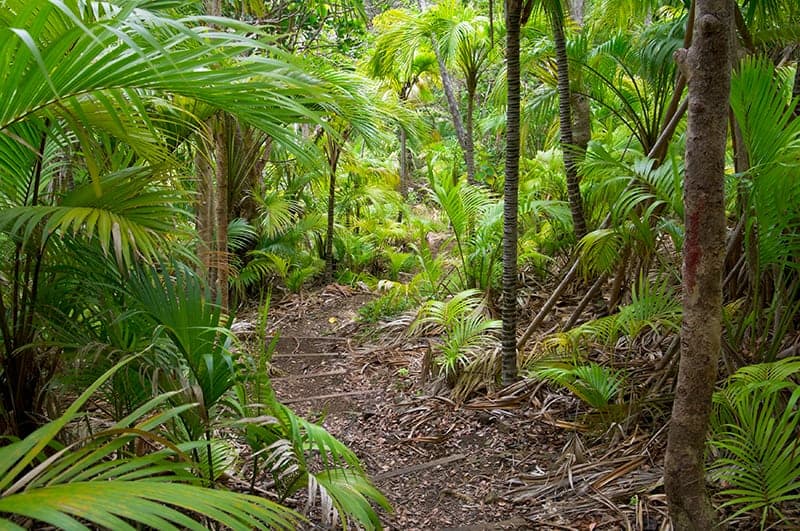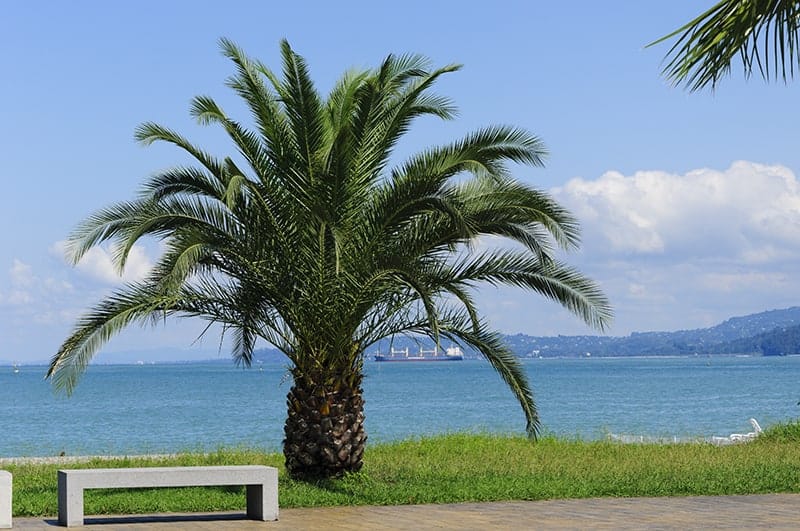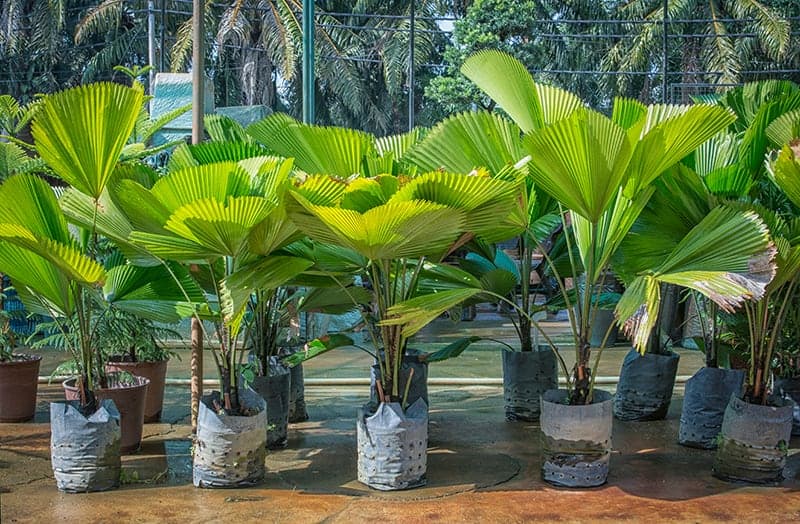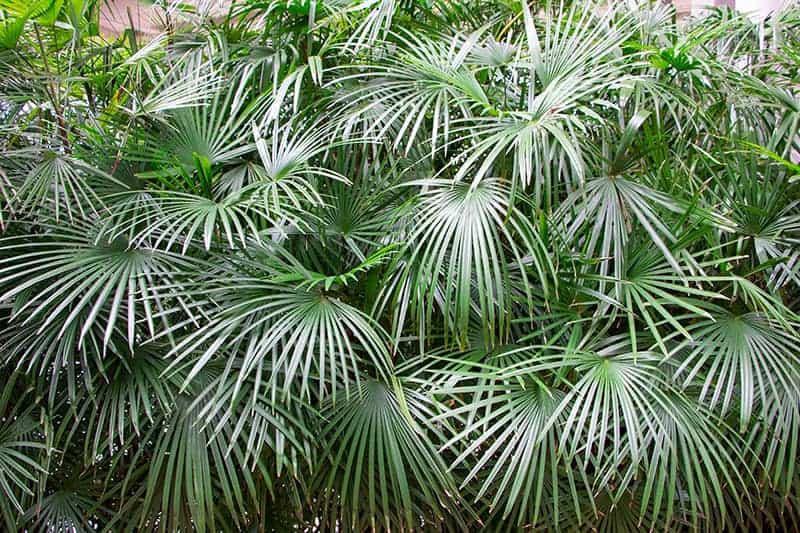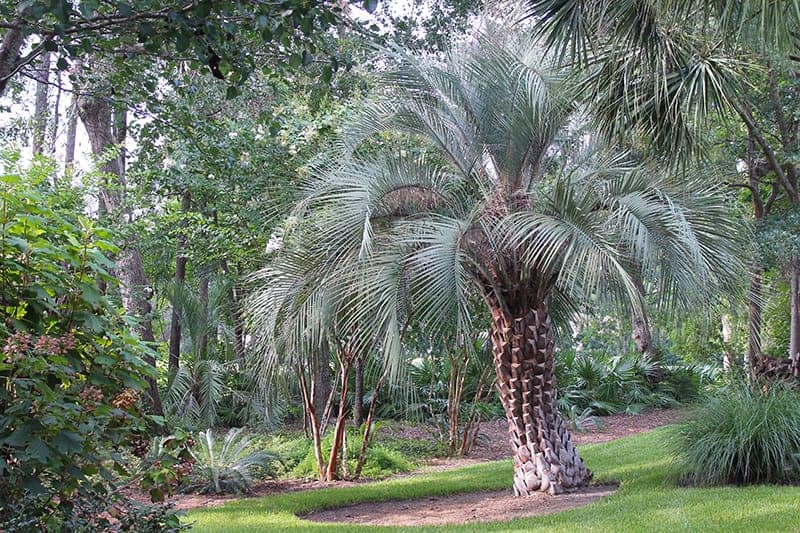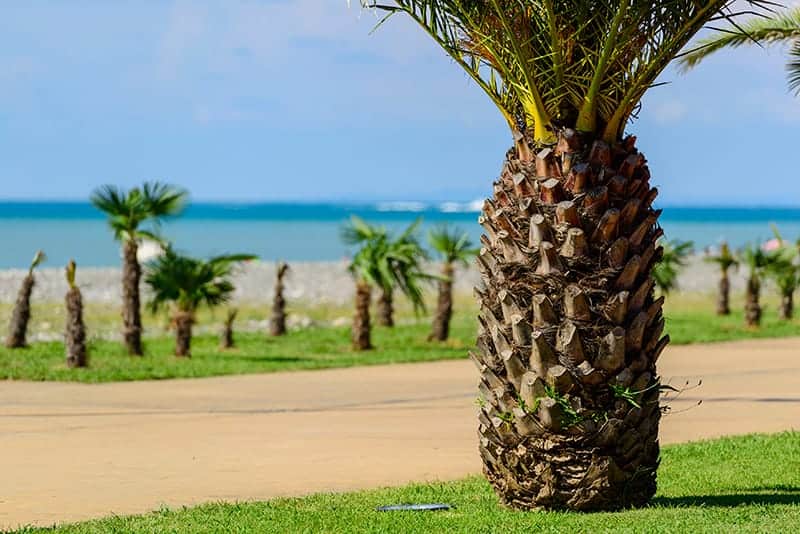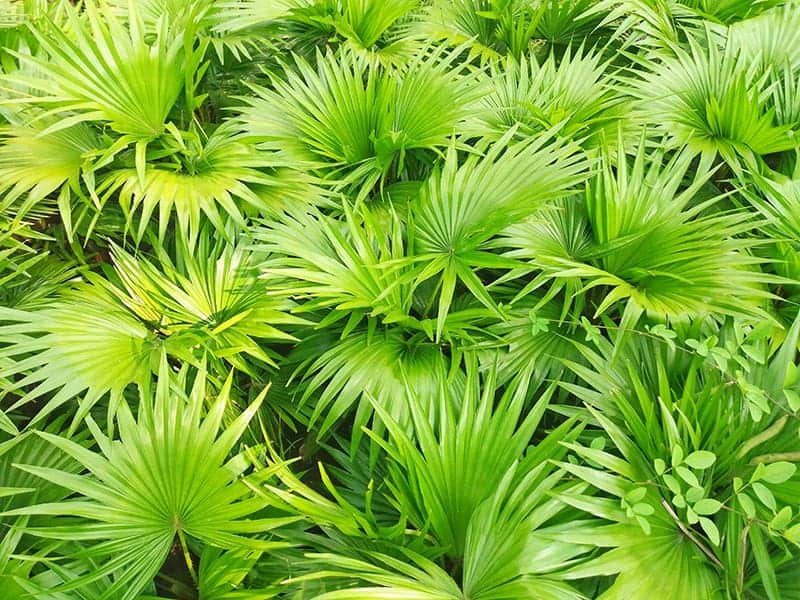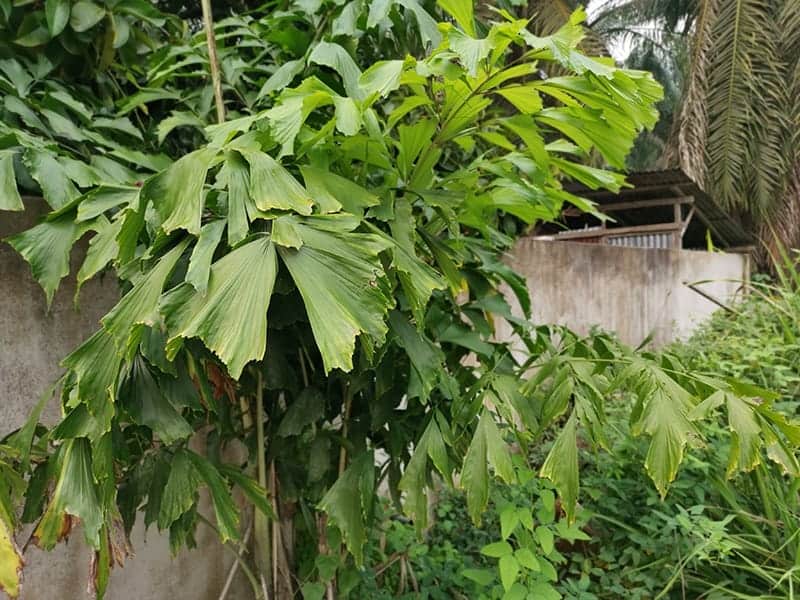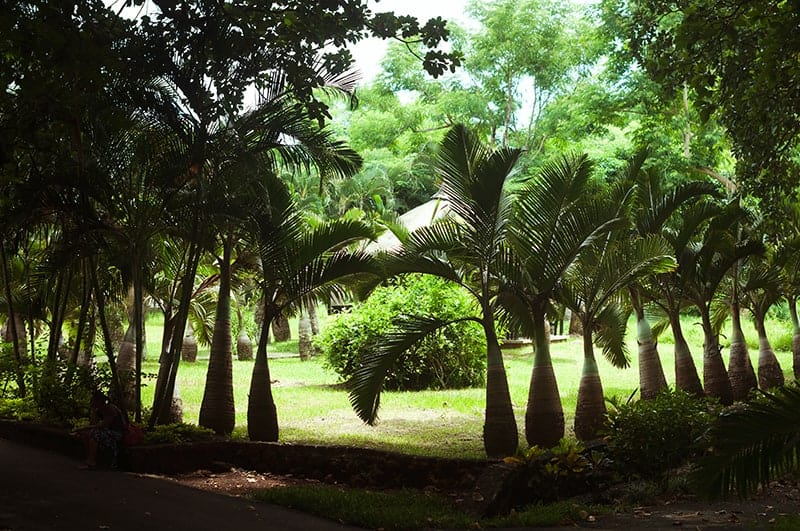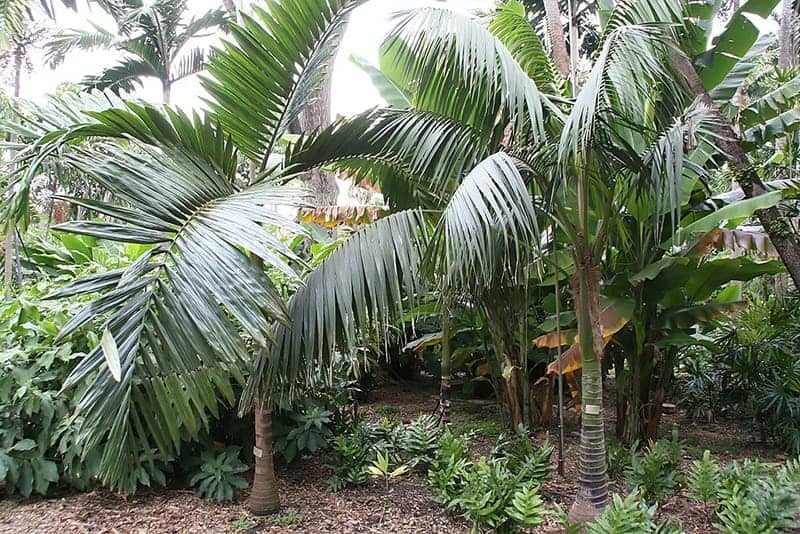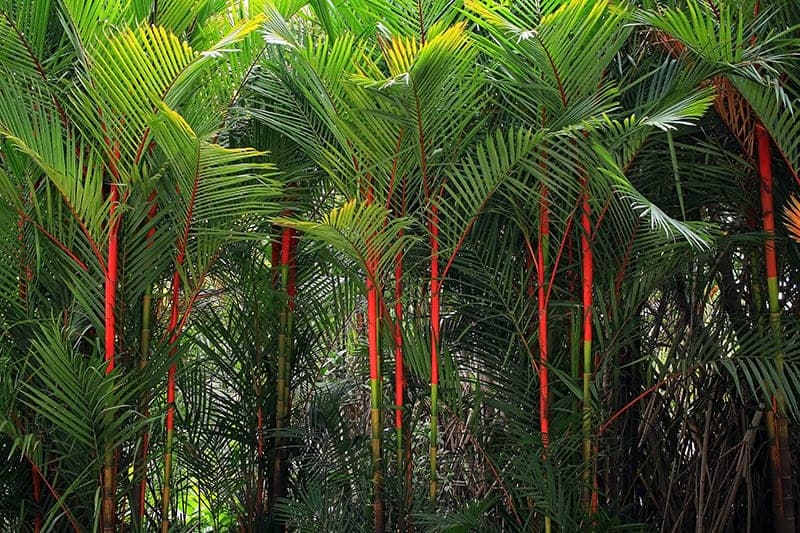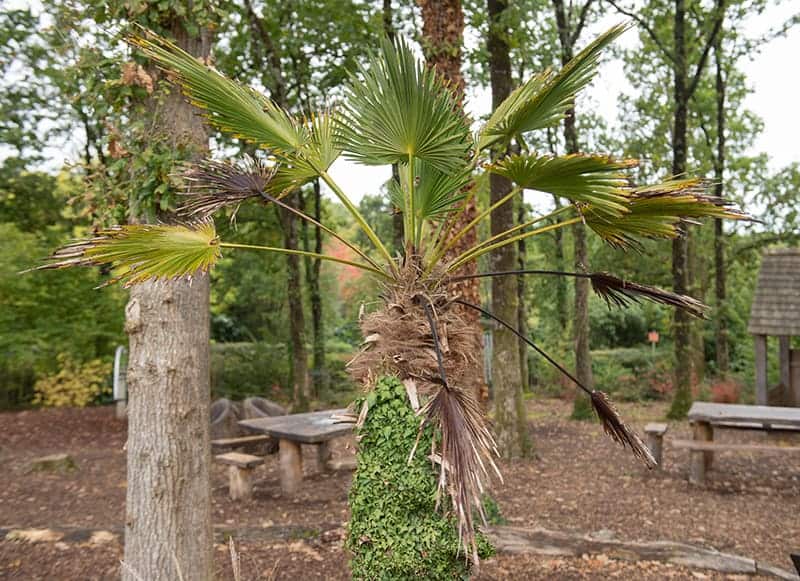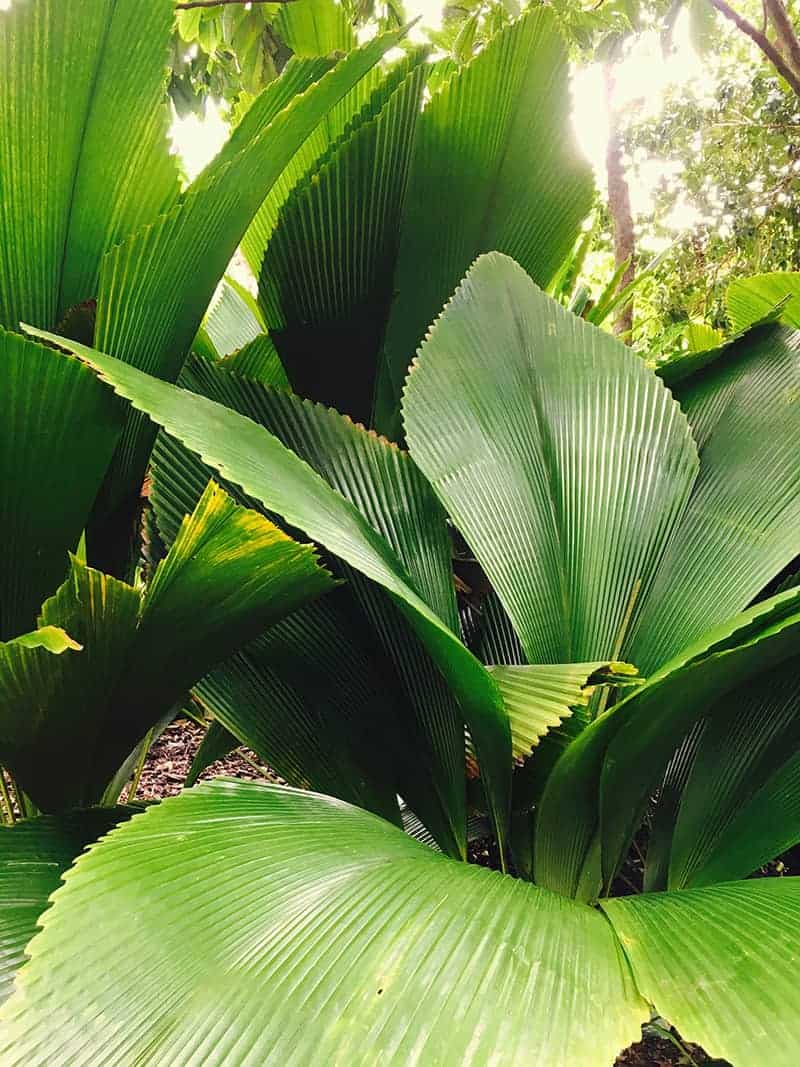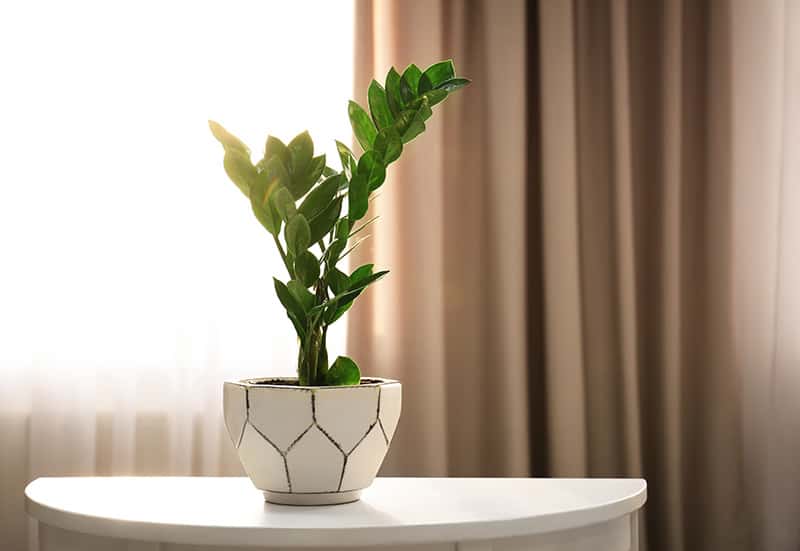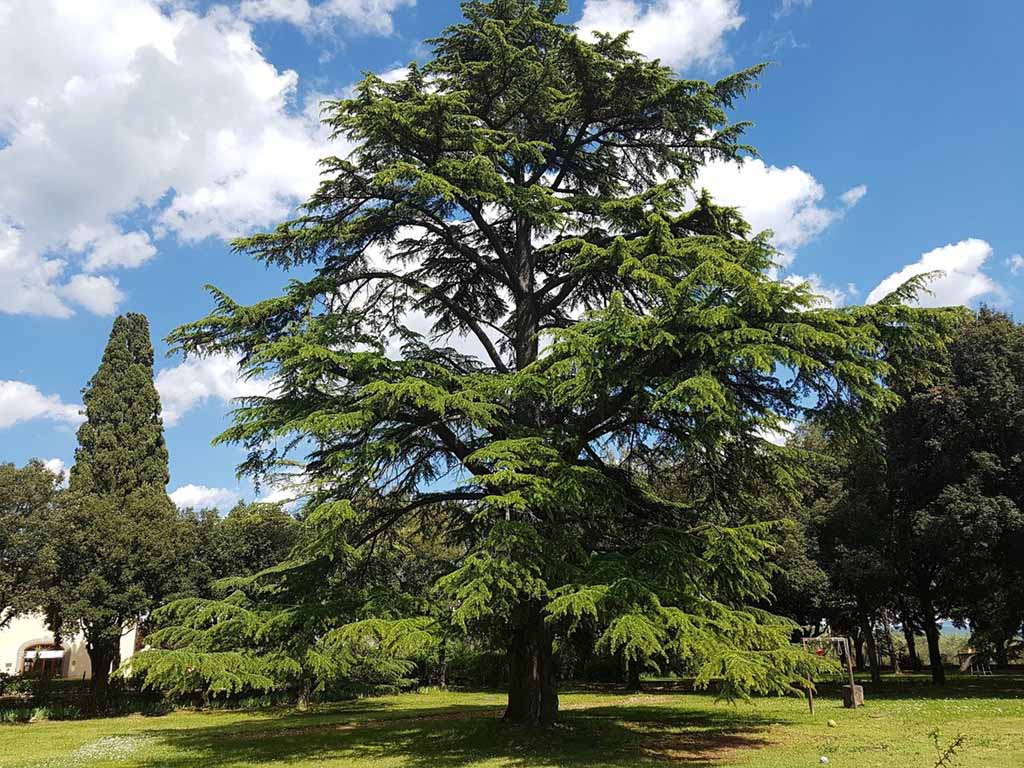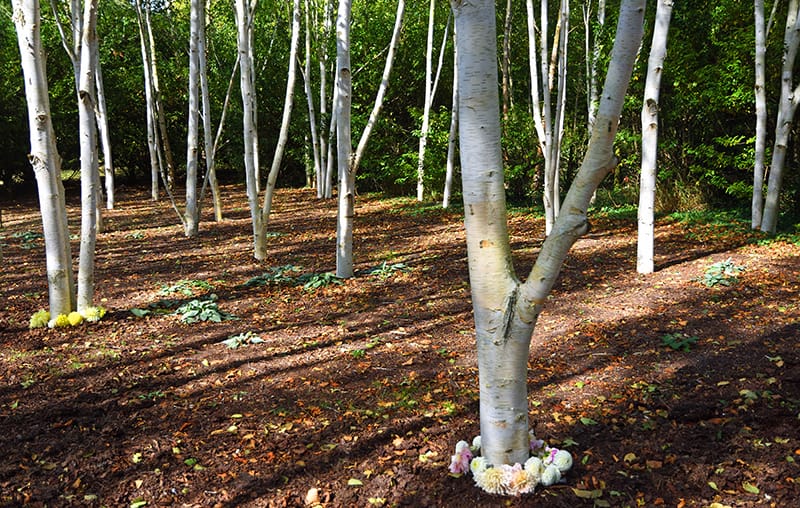- Home >
- Palm Trees
Palm Trees for Sale
Filters
Price Range
Growing Zones
Plant Type
Sunlight
Mature Height
Plant Characteristics
19 Results
-
Growing Zone(s): 3-11 / 10-11$48.95
-
Growing Zone(s): 3-11 / 9-11$174.95
$209.95Save up to 16% -
Growing Zone(s): 3-11 / 10-11$74.95
$149.95Save up to 50% -
Growing Zone(s): 3-11 / 10-11$64.95
$129.95Save up to 50% -
Growing Zone(s): 3-11 / 10-11$49.95
$70.95Save up to 29% -
Growing Zone(s): 3-11 / 8-11$189.95
$279.95Save up to 32% -
Growing Zone(s): 3-11 / 9-11$76.95
$209.95Save up to 63% -
Growing Zone(s): 7-10$88.95
$119.95Save up to 25% -
Growing Zone(s): 8-11$64.95
$109.95Save up to 40% -
Growing Zone(s): 3-11 / 10-11$55.95
-
Best SellerGrowing Zone(s): 3-11 / 10-11$54.95
$109.95Save up to 50% -
Growing Zone(s): 3-11 / 9-11$84.95
$109.95Save up to 22%
Palm Trees – Buying & Growing Guide
Palm trees are exotic plants native to warm and temperate climates, but since some varieties are cold hardy or suitable for use as houseplants, even those of us living in cooler regions are able to make a home for these stunning trees.
How to Grow Palm Trees
How to plant palm trees
Where you plant your palm tree will depend on the variety you purchase. Some do best in full sun; others prefer some shade. The trees like soil that’s a little acidic, so if the planting site runs alkaline, amend it with sulfur. Good drainage is essential, and soil with a good amount of organic material is preferred.
Keep the tree’s root ball moist until you’re ready to plant; then dig a hole that’s twice as deep and wide as the root ball. Tease out or prune any roots that are encircling the root ball, and then plant the tree so that the spot where the trunk meets the roots is at or slightly above grade.
Although palm trees are tolerant of drought, newly planted trees need supplemental watering for the first few months, until the tree is established. You want the soil to feel slightly moist — neither parched nor soggy. Keep weeds away from the trunk; a landscape fabric skirt can help with this.
How to achieve maximum results
Palm trees are tropical plants with thousands of varieties — most of which are fine in the South. Growing palm trees in the northern U.S., however, can be a challenge. There are varieties that can handle temperatures as low as 15 degrees fahrenheit, such as the cabbage palms and sago palms, but anyone living north of USDA Hardiness Zone 7 is best served by growing their palms in a pot that can be brought inside in the winter.
How to Care for Palm Trees
Watering and nutrients
Once they are established, palm trees shouldn’t need watering unless your region is experiencing drought conditions. If you do feel the need to water, make it a deep soaking rather than light watering.
If your palm tree is in a pot, feed it with a slow-release fertilizer every three months during the growing season; cut back during winter. If your tree is in the ground, do a foliar feeding in spring while it’s still small enough for you to reach the leaves. A mature tree doesn’t need as much feeding; fertilizers that are developed specially for palm trees are available in garden stores and the internet; follow package directions.
Pollination
Palms generally are pollinated by wind or insects, depending on the cultivar. Some palms are dioecious (both male or female), others are monoecious (each tree is either male or female). If you are interested in hand-pollinating your palm, your first task is to determine how that variety is pollinated in nature. Some palms take up to a year to germinate from seed, which needs to be placed in potting soil and kept moist and shaded.
Pruning
Pruning a palm tree couldn’t be simpler. Cut off dead or damaged leaves or fruit stems as they appear, and never top off the tree. When cutting off dead material, wait until there is no sign of green left, and cut as close to the trunk as you can. If your palm tree is too tall to reach and you’re not comfortable on a ladder, you can wait for leaves and other dead material to fall off naturally, which will take a few years.
Pests and diseases
Palms are prone to several types of fungus, including fusarium wilt and diamond scale. Some types of fungus cause rot, either at the crown or near the foot of the tree. A commercial fungicide may mitigate it. If your tree has rotted at ground level, rake some of the soil away from the trunk and make sure you’re not watering too much.
Several pests prey on various types of palm tree, including the giant palm borer, which is a beetle that tunnels into the trunk, and scale, an insect that looks like small bumps on the tree’s surface. Mites and caterpillars may also infest your tree. Horticultural oil or insecticide may help, but it’s a good idea to consult an arborist if you’re not sure what pest is attacking your palm.
Harvesting
Although many palms in the Southern Hemisphere are grown commercially for their oil, few palm tree owners in the U.S. harvest products from their palm trees. The exception is the date palm, which is grown extensively in California. These trees can be hand-harvested in fall, from September to December, depending on the variety.
The Best Indoor Palms
Palm trees are accustomed to growing in conditions similar to those found in our homes; consistently warm temperatures, average humidity, and bright to medium light. This makes palms an ideal houseplant, though it is obviously an enormous palm tree in the middle of your living room isn’t going to be practical! For this reason, slow-growing palms that require little maintenance are most suited for use in homes. These include the following.
Areca Palm (Dypsis Lutescens)
This is one of the most popular palms for indoor use due to its easy-going nature, which requires little in the way of care and its ability to withstand low light. It is native to Madagascar and also goes by the common name of butterfly palm. It can grow to around 8 feet in height, though typically doesn’t get much bigger than 5 or 6 feet tall when grown indoors.
The feathered fronds of the areca palm give it an attractive tropical look, though it is technically classified as a bamboo palm because its stalks resemble bamboo when mature. It can be difficult to tell the areca palm apart from the kentia palm as they are very similar in appearance, though typically, kentia palms have slightly wider leaves. Areca palms also tend to be less expensive to buy than kentia palms as they grow more quickly when young and therefore take less work for growers to produce and less time for them to reach a saleable size.
Keep your areca palm happy by setting it in bright but indirect sunlight and maintaining moist but not wet soil. Areca palms grown in direct light will scorch easily, while those grown in very low light will have slow growth. However, if you have a shaded corner of your home that needs brightening up, an areca palm is a good choice as long as you don’t mind very slow growth.
Areca palms cope well with low light, but it does inhibit their ability to grow. If kept in low light, ensure you water much less regularly than if grown in bright indirect light. This plant likes to be watered moderately but can withstand some short periods of drought.
Kentia Palm (Howea Forsteriana)
This palm has wide leaflets that can grow up to a foot in length, demanding space when kept as a houseplant. Fortunately, this plant is very slow-growing, typically only producing one new frons each year. This means that while the plant may be quite wide, it will take many years for it to reach great heights. Its slow-growing nature also means it will not need to be frequently re-potted, making it extra easy to care for.
The kentia palm grows natively in Australia and is also commonly known as paradise palm. It is a feathered type of palm, with fronds that have a gentle arch on them. Kentia palms grow well in bright, indirect light, but they also tolerate low light very well. While they won’t exhibit much new growth in low light conditions, they will survive and maintain a healthy appearance.
Water this plant only once the top layer of its soil has dried out and mist it every few days with water to increase humidity and prevent its leaf tips from turning brown.
Parlor Palm (Chamaedorea Elegans)
This palm is native to Mexico and is the most common type of palm to be used as a houseplant. It grows exceptionally slowly, reaching maximum heights of between 2 and 4 feet, making it a suitable size for growth in almost any home. With delicately arching feathered fronds in a mid-bright green color, it’s not hard to see why this palm is so popular.
Aside from being a compact size and having a pleasing aesthetic, this palm is also super easy to care for. It enjoys a variety of lighting conditions, from bright, indirect light to shade. It also likes to be watered fairly infrequently as it is easily susceptible to root rot. Overwatering will quickly kill the plant, so only water once the top few inches of soil are dry and always be sure to plant it in well-draining soil.
As a very slow-growing plant, you may be waiting for a good few years for it to reach its mature height, but as long as you are a patient grower, then this has its benefits. The plant won’t quickly outgrow its home on your shelf or table, and it will not need to be re-potted each year. In fact, the parlor palm likes to be rootbound, so only repot the plant when absolutely necessary.
Sentry Palm (Howea Belmoreana)
The sentry palm is very similar in looks to the kentia palm, though there are a few distinguishing features. The leaflets are wide but not as wide as that of the kentia, and its fronds are more arched. The leaves also have a habit to curl slightly, which is why it also goes by the name of curly palm.
This palm grows even more slowly than the kentia, but it can reach extraordinary heights when mature of around 10 feet, which is very tall for an indoor plant (though it grows much taller when grown outdoors). Its stature makes it a great focal point in hotel lobbies or in shopping malls. To grow this plant indoors, allow it bright, indirect light and mist it regularly.
Pygmy Date Palm (Phoenix Roebelenii)
This palm is native to Southeast Asia, growing up to 10 feet outdoors but typically between 4 and 6 feet when grown as a houseplant. With a chunky wide trunk and narrow leaflets, the pygmy date palm has an interesting look. It is categorized as a feathered type of palm and grows very slowly.
This plant likes to be kept in a mixture of shade and bright, indirect light and for its soil to be kept consistently moist. Water the pygmy date palm once the top of the soil begins to dry out and always be careful not to overwater. As a slow-growing plant, do not re-pot this palm frequently. It is sensitive to having its roots disturbed, and prefers to be kept slightly rootbound.
Cold Hardy Palms
If you want to create a tropical look in your garden, then palm trees are absolutely essential. However, it isn’t common to see palm trees in cooler climates, and this might be because many people don’t realize that several cold-hardy varieties of palms exist, assuming instead that they only grow in warm climates.
While it’s true that palm trees do hail from warm regions, there are several varieties that adapt well to low temperatures and make ideal garden plants or trees in unlikely areas. These include the following.
Chinese Fan Palm (Livistona Chinensis)
Chinese fan palms, also known as fountain palms, hail from China and Japan. They have become popular across the world thanks to their ability to adapt to a wide range of conditions. They perform well in both bright light and shade, they are drought-tolerant, and frost hardy. They are so easy to grow that in some regions have even become invasive, such as in the US state of Florida.
Chinese fan palms can grow up to 40 feet tall, but this is uncommon outside of their native habitat. They are easy to recognize, with their wide leaves, which grow in a circular shape in the style of an open fan in deep green to blue-green hues. This attractive tree is so hardy and easy to grow that it is recommended for beginner gardeners in climates where temperatures do not drop below 20 ºF.
Needle Palmetto (Rhapidophyllum Hystrix)
The needle palmetto, also known as the needle palm, is a perfect choice of palm in cold regions as it is one of the hardiest varieties of palm in existence. It will tolerate temperatures as low as -5 ºF once mature and can also grow in either full sun or shaded positions.
The tree does require a fairly large amount of space, however, growing up to 10 feet in height with a similar-sized spread. Its needle-like leaves are sharp and pointed, growing in clumps from the ground upwards, so it may not be the best choice of plant for your home garden if there are small children running around. The needle palm grows at a moderate rate and can tolerate frequent watering. However, it does not tolerate salt spray, so it should be avoided if you live close to the ocean.
Pindo Palm (Butia Capitata)
The pindo palm, also known as the jelly palm, is the hardiest palm of the feathered type. It can grow to heights of 30 feet. though more typically grows to between 15 and 20 feet tall. The foliage of this tree grows in a beautiful blue-green shade, which is at its most vibrant when positioned in full sun.
With a large chunky pale brown trunk and large spiked fronds, this tree is a real showstopper. The pindo palm is tolerant of low temperatures and grows well in cool regions. It is happy in temperatures as low as 5 ºF, but any lower than this and the tree will start to show signs of ill health.
Palmetto Tree (Sabal Palmetto)
This palm is the state tree of Florida and South Carolina and is grown in abundance along the coastlines of both of these states, as well as in Georgia. The palmetto tree grows to heights of 30 feet and is the very essence of tropical-looking trees, making it a popular choice for home gardens. It goes by several common names, including Carolina palmetto, cabbage palmetto, and common palmetto.
This is an incredibly sturdy tree and stands up well against the forces of hurricanes and tropical storms. Although the palmetto tree is happy in warm climates, it can also tolerate low temperatures. You can grow this tree, providing your climate doesn’t drop to lower than 5 ºF.
Saw Palmetto (Serenoa Repens)
The saw palmetto is low growing, rarely reaching heights of more than 5 to 10 feet. It grows along the ground, usually without a trunk, producing stiff foliage that spans out in a fan shape. It works well when grown underneath the canopy of taller trees and can also be used as a tropical looking ground cover.
The saw palmetto is a common palm found in the southern states of the US, but due to its cold hardiness, it is also suitable for use in cooler climates. The plant can tolerate temperatures as low as 0 ºF.
Container Palms
Growing a palm tree in a container works well for a number of reasons. Container grown palms will have limited growth in terms of height, which is preferable if you have a smaller garden or don’t want the tree to take over a large space. Container palms can also be grown in almost any climate, as those which are not cold hardy can simply be moved indoors during the winter. Palms which grow well in containers include the following.
Fishtail Palm (Caryota Mitis)
This palm belongs to the feathered types of palm, though you wouldn’t know that from looking at it. The foliage of this tree is very unusual for a palm tree, and you’d be forgiven for thinking it wasn’t a true palm at all. The unique leaves are shaped like fishtails, appearing in a bi-pinnate pattern.
The tree is native to India, Asia, and the South Pacific, though it now commonly grows in Florida and the Caribbean. In fact, the fishtail palm is now considered an invasive species in Florida, where it loves the warm climate and rich soil.
The tree works well in a container, especially when young at a more manageable size. It is not cold hardy and only tolerates temperatures as low as 32 °F. If you live outside of USDA hardy zones 10 and 11, you will need to bring this tree indoors during the winter to protect it from the cold.
The fishtail palm can grow to heights of 15 to 20 feet, so once mature, it will be too big and heavy to transport, making it suitable only for growing in climates where it does not need to be portable.
Bottle Palm (Hyophorbe Lagenicaulis)
The bottle palm tree has a unique look and is so-called due to its trunk, which bulges out at the bottom to give the shape of a bottle. This tree is ideal for growing in a container as it maintains a fairly compact size, typically not exceeding between 12 feet in height when mature. The tree is incredibly slow-growing, so if you grow the bottle palm from a young specimen, then you will be able to keep it in the same pot for quite some time.
When young, the trunk takes on a different appearance, with the bottle shape only taking form as the tree matures. The older the tree gets, the more exaggerated the bottle shape of the trunk will become.
The foliage of this tree takes the form of leaflets growing on gently arching fronds. The tree typically has no more than 6 fronds at any one time. This tree is suitable for growing outdoors in USDA hardiness zones 10 and 11, with the ability to tolerate temperatures to 34 °F. If kept in cooler climates than this, it will need to be moved indoors during winter.
Red Feather Palm (Chambeyronia Macrocarpa)
This brightly colored palm hails from New Caledonia in the South Pacific, where it grows in the rainforest. It is also known as the red leaf palm and the flame thrower palm, as a nod to the new leaves the tree produces, which are red when they first appear.
A new leaf can be anywhere from dark maroon to vibrant red but will transform into bright green within about two weeks. The leaves can be very big on mature trees and can measure up to 12 feet long. The leaflets can measure between 3 and 4 feet each, making this a very broad tree when fully grown.
You can expect a mature red feather palm to reach heights in excess of 20 feet, but as a slow grower, this can take a while to achieve. It is ideally suited for life in a container, grown indoors as a houseplant, or outside on a terrace or patio. It is not cold hardy and should only be kept outdoors all year round in USDA growing zones 10 and 11. Otherwise, it should be brought inside during the colder months.
Lipstick Palm (Cyrtostachys Renda)
The lipstick palm gets its name from the red coloring of its crown shaft, which is the uppermost part of the trunk. It is also commonly known as sealing wax palm, as the red is said to be the same shade as the wax used to seal envelopes in a bygone era.
This tree grows to between 25 and 30 feet tall, with leaves spanning up to 5 feet. In its native habitat, it can grow to over 50 feet in height, but this is unlikely in home landscapes. The feathered leaves of this palm appear in different shades, with pale green foliage lower down and deeper darker green leaves on the top of the tree.
The interesting thing about this tree is that it is incredibly thirsty, and unlike most plants and trees, it will thrive in soggy soil. It grows well in containers that are partially submerged in water, such as those in a water feature or in a pond, as this provides the ideal level of moisture for the tree.
You should never allow the soil of your lipstick palm to dry out. To help with this, grow the tree in rich soil, which is good at retaining moisture. When young, the tree will be best positioned in partial shade, but it can adapt to full sun when mature.
Windmill Palm (Trachycarpus Wagnerianus)
The windmill palm is native to China and is medium in size, typically growing to 25 feet tall with leaves measuring 3 feet across. Its trunk will usually measure 8 inches around on a mature tree, though it tends to appear much thicker thanks to the loose fibers surrounding it.
This tree is tolerant of a wide variety of growing conditions. Once mature, it is drought-tolerant but can also handle soil that is too moist. It is also salt-tolerant and can grow in both full sun or partial shade.
Once mature, the tree is surprisingly cold hardy. It can withstand snow and temperatures as low as 0 °F. Younger windmill palms will need some protection from low temperatures, so they are ideal for growing in containers when young is that they can be moved indoors for winter, then planted outside in the ground once they are old enough to cope with freezing temperatures.
As evidence of their ability to grow in cold climates, the windmill palm has been spotted growing in Russia, England, western Canada, and even Alaska. It is an ideal way to add a tropical touch to your garden, even in colder climates.
Diamond Palm (Johannesteijsmannia Altifrons)
This striking palm has some of the largest leaves of any palm in existence. They appear to be growing directly out of the ground, although in actual fact, the tree does have a trunk, but it is subterranean, and therefore sits entirely below ground level.
The leaves themselves are shaped like splayed our fans, similar to those made by children out of folded paper. The concertina pattern is reminiscent of an open accordion, corrugated metal, or a pleated skirt.
These plants are native to rainforests in Thailand and Malaysia, growing in the shade beneath larger trees. They are therefore best grown in shade, appreciate heavy humidity, and are thirsty drinkers.
